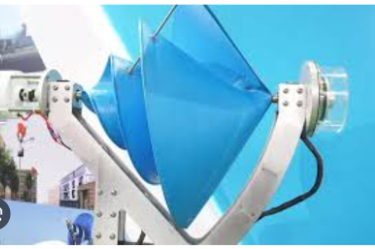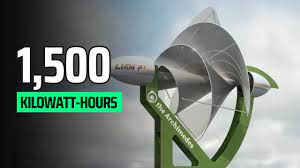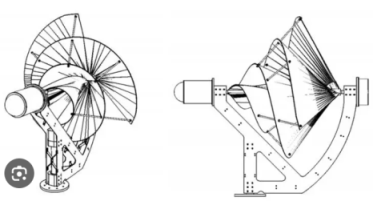nCa Report
When it comes to wind power generation, the Dutch are the leaders. They have reinvented the windmill.
The Dutch MSc Marinus Mieremet has been working since 2003 on a new and more efficient way of generating power by a wind turbine.
It is a windmill that yields more energy, produces little noise, is bird friendly and also looks very good.
It is called the Archimedes Windmill (AWM). It is a new type of wind turbine comprising three circular blades which are wrapped around one another and then expanded. This creates a three-dimensional conical turbine, similar to elongated shells found on the beach. The special design ensures that wind is drawn into the turbine. The average yield is many times higher compared to a normal urban windmill propeller.
In 2012 MSc Marinus Mieremet moved to South Korea and started working together with the Korean company Esco RTS. Tests and development all took place in Korea, together with Esco RTS, the Pusan National University, Borim, and other Korean partners. Among the tests were many performance wind tunnel tests, wind force tests up to 50 m/s, and many field tests in South Korea, The Netherlands, Germany, Spain, Poland, Czech, Dutch Antilles, and India. The AWM is tested in almost every weather condition.
International Energy Solutions (IENERGY) is producing various models of the Archimedes Windmill. Among them is the Liam F1 Urban Wind Turbine, a small wind turbine with a diameter of 1,5 meters which weighs approximately 100 kilograms. Due to its size and weight it is suitable for installation on almost every roof and wall. In the Netherlands, the Liam will generate between 300 and 2,500 kilowatts annually at an average wind speed of 4,5 meters per second. These results are measured at 10 meters height, the average height of the roof of a terraced house. In the Netherlands, the most common wind direction is South-West.
The actual yield of the wind turbine depends on your personal circumstances, such as the amount of wind, at your home location and the height of your roof.
Considering the electricity use of an average Dutch household lies around 3300 kwh (kilowatt hours) a year, it is possible to generate half of your used electricity by installing the Archimedes on your roof. In Dutch areas with a wind speed of 4,5 m/s or higher, the Liam provides a good return on investment. When your average wind speed is less, you will have to place it above ten meters, on a flat, for example. Due to its natural form, this wind turbine can extract 80% of the energy in wind.
It is small, quiet and affordable. It produces slightly more decibels than the urban background noise and therefore it is not audible. No more than 45 decibels when rotating. (50 decibels is rain, the sound in a forest). No complicated systems are required to turn this turbine in the right direction, it uses his shape to do so.
Several Liams can be placed together in a triangular alignment. Each turbine draws in wind by turning into the right direction, therefore the turbines do not compromise each other in their yield. They do not capture each other’s wind, which is the case with the large turbines. In addition, combining the Liam with solar panels is a possibility that provides a virtually constant output. /// nCa, 19 March 2024 (Based on material from Archimedes.com, windcycle energy, and ienergy-us.com – images credit The Archimedes and BizzBuzz]


